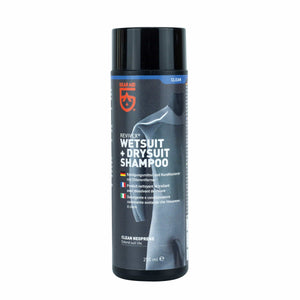It’s your choice - with our knowledge.

Product Insights
Discover more about the products in this article

Shampoing pour combinaison humide et sèche
Featured Products
Bonnes pratiques pour les triathlètes pour entretenir leur équipement
En tant que triathlète, l'état de votre équipement peut grandement influencer vos performances et votre confort à l'entraînement et en compétition. Un bon entretien de votre équipement améliore non seulement sa longévité, mais garantit également son fonctionnement optimal lorsque vous en avez le plus besoin. Voici des conseils simples et efficaces pour vous aider à prendre soin de votre équipement de triathlon.
Nettoyage et stockage
Nettoyage régulier
Un nettoyage régulier de votre équipement est essentiel pour éviter l’accumulation de saleté, de sueur et de bactéries, qui peuvent dégrader les matériaux au fil du temps.
-
Combinaisons : Rincez votre combinaison à l'eau douce après chaque utilisation et lavez-la avec un nettoyant spécifique pour combinaison, tel que le shampoing Gear Aid Wet & Dry Suit Shampoo .
Après quelques utilisations. Suspendre pour sécher à l'abri de la lumière directe du soleil afin d'éviter toute dégradation du matériau. - Vélos : Nettoyez votre vélo après chaque sortie, en insistant sur la chaîne et les vitesses. Utilisez une brosse douce pour atteindre les endroits difficiles d'accès et éliminer la graisse et la saleté tenaces.
- Chaussures de course : Retirez les semelles intérieures et les lacets et lavez-les séparément. Utilisez une brosse douce pour enlever la boue et les débris, puis lavez-les selon les matériaux. Laissez-les sécher complètement à l'air libre avant la prochaine utilisation.
Stockage approprié
Stocker correctement votre équipement peut prolonger considérablement sa durée de vie et ses performances.
- Combinaisons : Suspendez votre combinaison sur un cintre large pour éviter les plis et rangez-la dans un endroit frais et sec.
- Vélos : Conservez votre vélo dans un endroit propre et sec. En cas de stockage prolongé, surélevez-le pour éviter la déformation des pneus.
- Chaussures de course : Rangez-les dans un endroit bien aéré, loin des sources de chaleur directes. Rembourrer les chaussures avec du papier journal permet de conserver leur forme et d'absorber l'humidité.
Entretien périodique
Inspection des engrenages
Des inspections régulières peuvent détecter des problèmes potentiels avant qu’ils ne deviennent des problèmes majeurs.
- Combinaisons : Vérifiez les déchirures ou les coutures qui se détachent, qui peuvent être réparées avec un adhésif pour combinaison tel que l'adhésif néoprène Gear Aid Black Witch .
- Vélos : Inspectez régulièrement les plaquettes de frein, les pneus et les câbles pour détecter toute trace d'usure. Assurez-vous que les boulons sont serrés conformément aux spécifications du fabricant.
- Chaussures de course : Surveillez la bande de roulement et l'usure générale. Remplacez vos chaussures environ tous les 480 à 800 km pour éviter les blessures.
Service professionnel
Certaines tâches d’entretien sont mieux confiées à des professionnels, notamment pour les équipements performants comme les vélos.
- Entretien du vélo : Faites entretenir votre vélo par un professionnel au moins une fois par an, voire plus souvent si vous vous entraînez régulièrement. Cet entretien comprend le réglage des vitesses, le centrage des roues et la vérification des freins.
- Réparations de combinaisons : En cas de dommages importants, pensez à faire appel à des services de réparation professionnels pour prolonger la durée de vie de votre combinaison.
Améliorer les performances
Mises à niveau et remplacements
Des mises à niveau régulières et des remplacements opportuns des équipements peuvent non seulement améliorer les performances, mais également garantir la sécurité.
- Composants du vélo : la mise à niveau des composants tels que les pneus, les pédales et les selles peut améliorer les performances et le confort du vélo.
- Accessoires High-Tech : Pensez à investir dans des montres GPS comme une COROS PACE 3 pour améliorer l'efficacité de votre entraînement.
Entraînement intelligent
Un bon entretien de l’équipement comprend la compréhension de la manière d’utiliser efficacement chaque pièce pendant l’entraînement et les compétitions.
- Pratique de transition : pratiquez régulièrement vos transitions pour minimiser le temps et le stress sur l'équipement pendant les courses.
- Utilisation correcte : Apprenez l’utilisation et la manipulation correctes de chaque type d’engrenage pour éviter une usure inutile.
It’s your choice - with our knowledge.







































































































